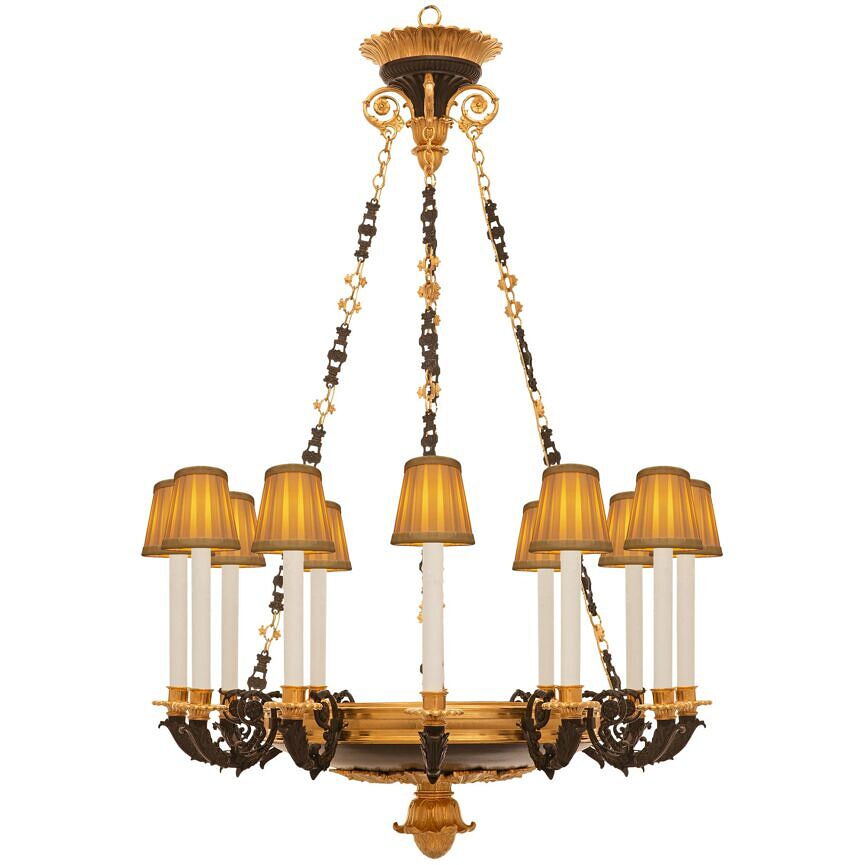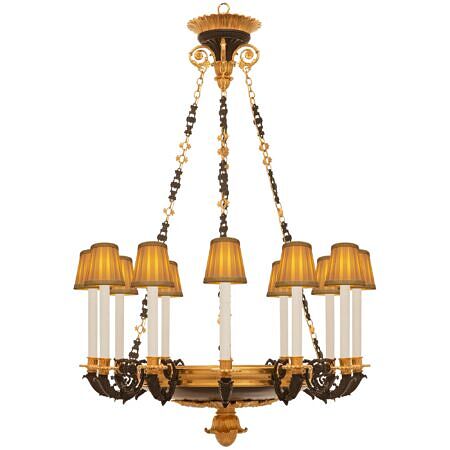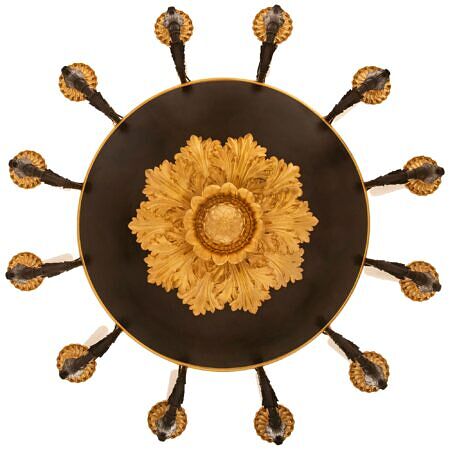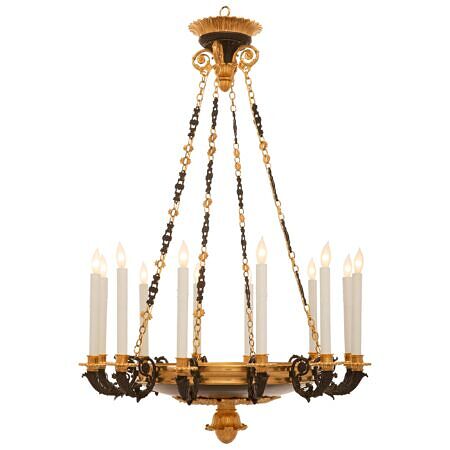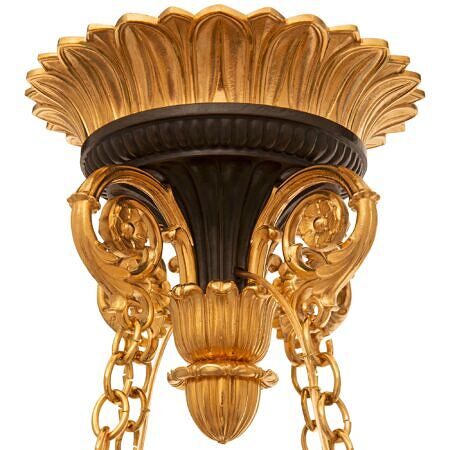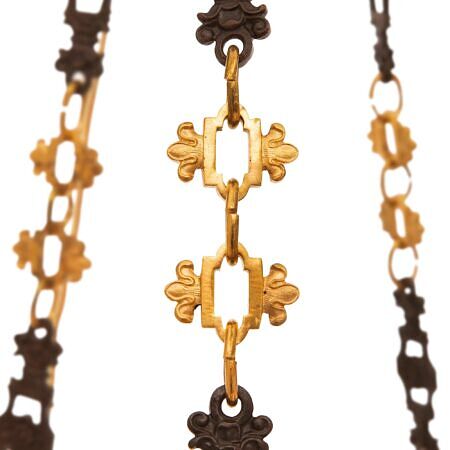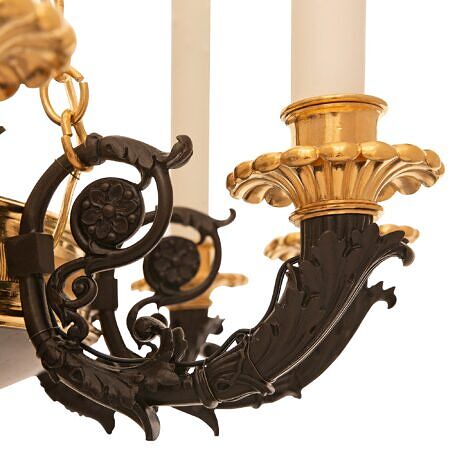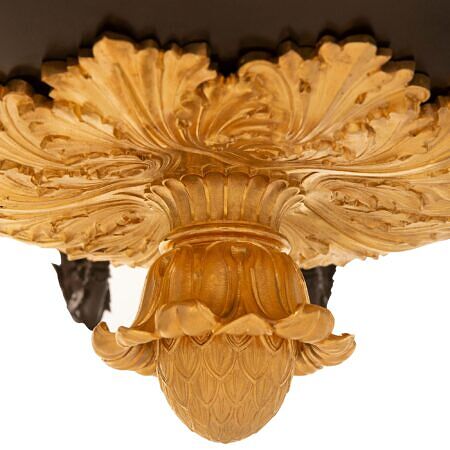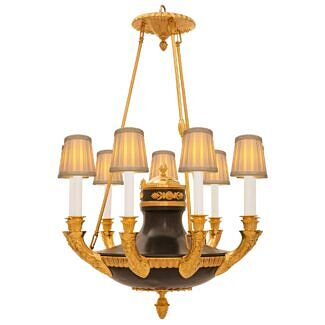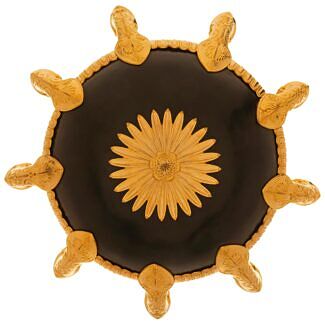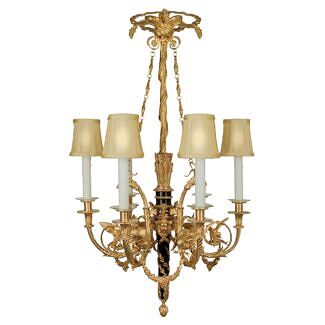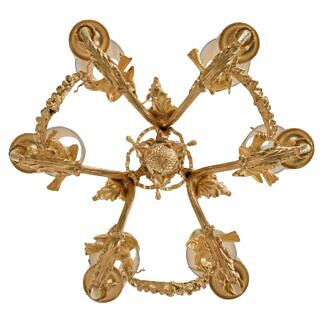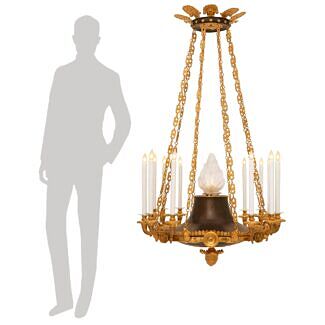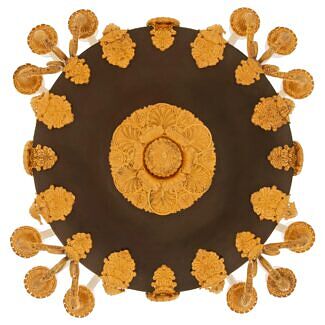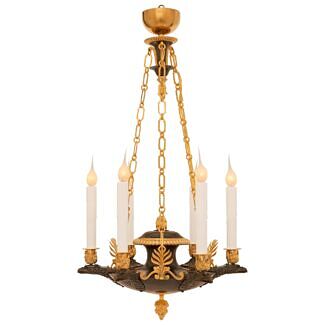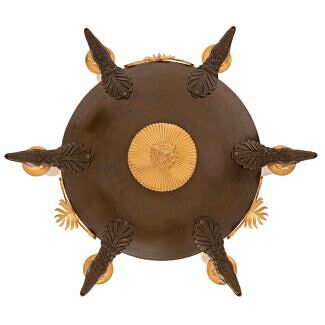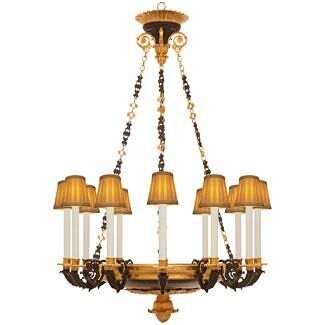A French 19th century Charles X st. Belle Epoque period patinated Bronze and Ormolu chandelier
List: $22,500.00
A handsome and high quality French 19th century Charles X st. Belle Epoque period patinated Bronze and Ormolu chandelier. The twelve arm chandelier has a elaborate bottom Ormolu finial surrounded by palmettes below fanciful acanthus leaves and the elegant patinated... — Read More
A handsome and high quality French 19th century Charles X st. Belle Epoque period patinated Bronze and Ormolu chandelier. The twelve arm chandelier has a elaborate bottom Ormolu finial surrounded by palmettes below fanciful acanthus leaves and the elegant patinated Bronze bottom dome. The dome has an Ormolu reeded band which the twelve 'C' scrolled patinated Bronze arms extend from. Each arm is decorated by a bottom acanthus leaf which leads to the flower like spray saucer all below the candle cup. The chandelier is held by four very decorative Ormolu and patinated Bronze pierced link chains which lead up to the top crown. The crown is designed with upside down 'C' scrolls which hold the four pierced link chains all below a fluted top crown with foliate Ormolu palmettes. — Read Less
- Weight: 50 lbs / 22.675 kg
- Item # 13387
-
H: 43.5 in L: 30 in D: 30 in
H: 110 cm L: 76 cm D: 76 cm
- Shade Diameter: 5 in
- France
- 19th Century
- Ormolu, Patinated Bronze
- Belle Époque Read More, Charles X st. Read More
Related products
-
# 13343 - H: 36" L: 24" D: 24"
-
# 8000 - H: 35" D: 19"
-
# 12725 - H: 60" L: 38" D: 38"
-
# 12671 - H: 30" L: 17" D: 17"


